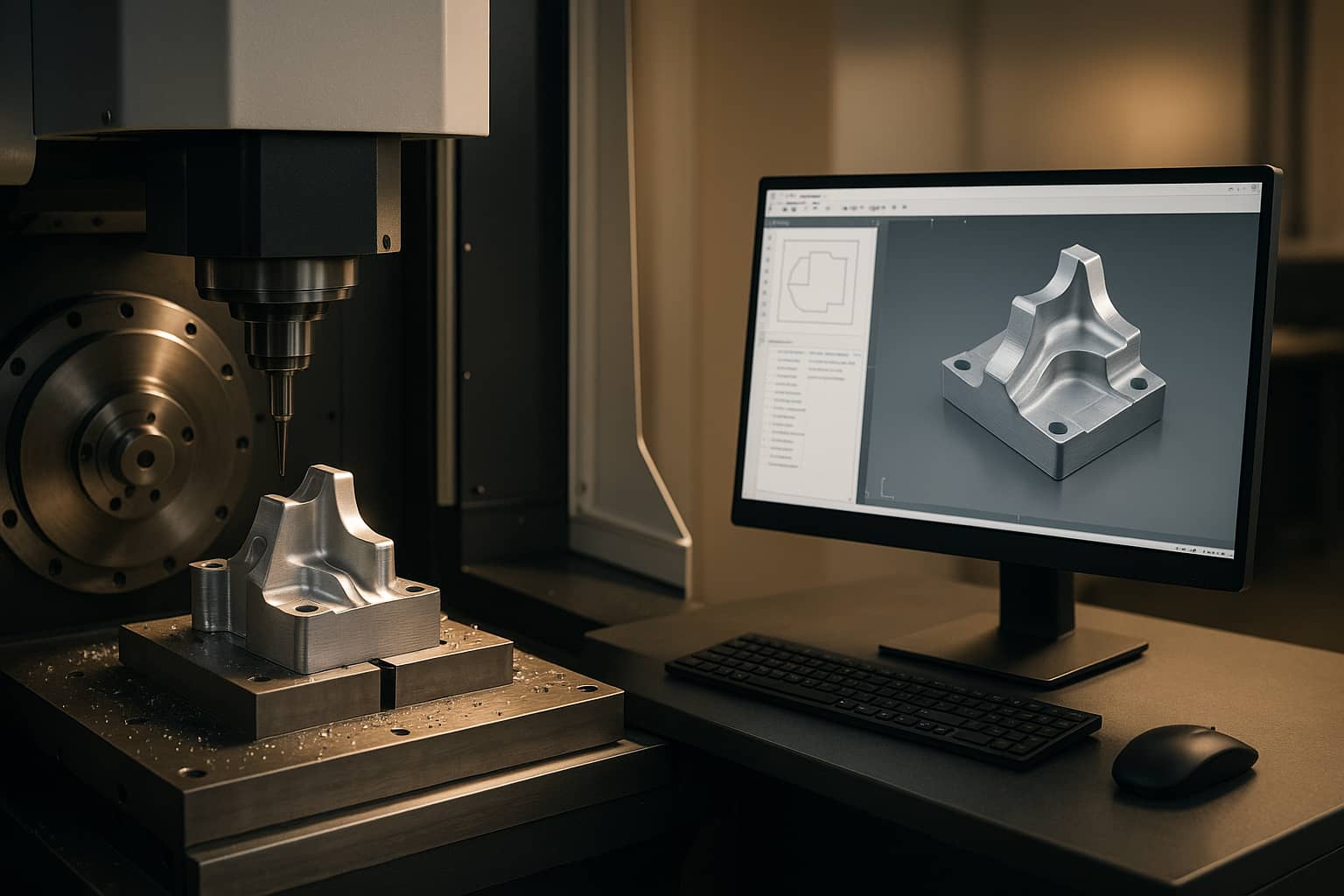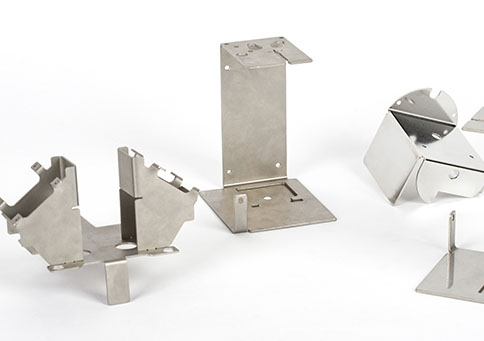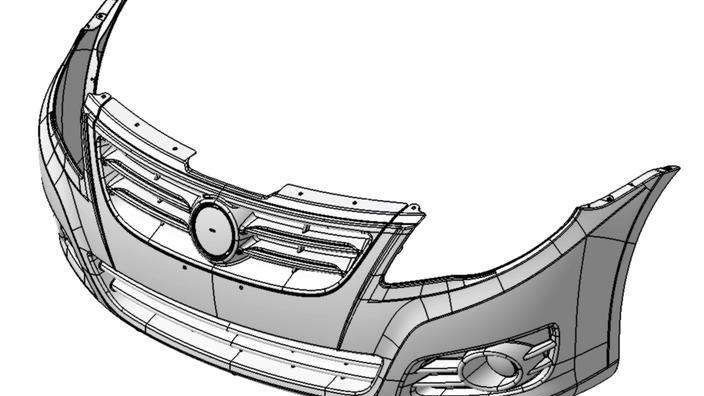
-

-
Automation in CAD/CAM: Benefits for CNC MachiningAutomation in CAD/CAM is transforming CNC machining by improving efficiency, accuracy, and reducing costs. Here's what t...
-

-
Advantages of CNC Machining for Rapid PrototypingMastars is a global company that provides one-stop customized industrial manufacturing services. Its business scope is a...
-

-
characteristics of metal stamping die|Custom metal stamping|MastarsMastars business scope: rapid cnc service,custom metal stamping,rapid sheet metal prototyping ,shell mold, hardware spri...
-

-
Tighter Tolerance Requirements Promote Micro Molding Technology Innovation|CNC machining company |CNC machining services|Customized 3D Printing Service ?Materials research is still one of the m...
-

-
Mastars|Application of injection molding technology in automobile fieldInjection molding technology has some special properties, such as precision, environmental protection, resource saving, ...
-

-
Sustainable Mold Assembly Practices: Reducing Carbon FootprintUnder EU CBAM policy, Mastars adopts sustainable mold assembly practices and carbon management to achieve green manufact...
-

-
Bioness
-

-
Why should the car bumper be made of plastic?|rapid cnc machining|prototypingMastars is dedicated to the extrusion, injection molding, and machining of various plastic products. We specialize in PE...
-

-
Key Insights to Drive ExcellenceMastars kicked off September with a focused morning meeting, where leaders shared actionable tips for efficiency and ser...
Contact us
- Building 6 , Blue Sky Industrial Park, Ditang Road, Shajing Town, Shenzhen City,Guangdong, China (518104)
- marketing@mastars.com
Detailed introduction to Pressure die Casting
Here is a detailed
introduction to Pressure Die Casting.
Pressure Die Casting: A Detailed Overview
1. Executive Summary
Pressure Die Casting, often simply called die casting, is a high-volume manufacturing process for
producing precisely detailed, dimensionally accurate metal parts. It involves
forcing molten metal under high pressure into a reusable steel mold, known as a die. The combination of high pressure and rapid
solidification allows for the production of complex, thin-walled components
with excellent surface finish and high production rates. It is the dominant
process for mass-producing non-ferrous metal parts, especially those made from
zinc, aluminum, and magnesium alloys.
2. Core Principle & Key Characteristics
The fundamental
principle is the use of persistent, high pressure to fill a die cavity completely and rapidly before the metal solidifies.
Key Characteristics:
-
High Pressure: The
defining feature. Pressure is used not just to fill the cavity but to hold
the metal under pressure during solidification, resulting in a dense,
pore-free part.
-
Rapid Production: Cycle times are very short (seconds to minutes), making it ideal for
volumes ranging from thousands to millions of parts.
-
Excellent Dimensional
Accuracy: The use of precision-machined steel
dies produces parts with tight tolerances and minimal variation.
-
Thin Walls &
Complex Shapes: The high injection pressure allows the
molten metal to fill very thin sections and intricate details that would
be impossible with other casting methods.
-
Superior Surface
Finish: Parts have a smooth surface directly
from the die, often minimizing the need for post-machining.
3. The Two Main Processes: Hot vs. Cold Chamber
The process is
divided into two main variants, distinguished by how the molten metal is
injected into the die. The choice depends primarily on the melting point of the
alloy being cast.
1. Hot-Chamber Die Casting
-
Principle: The
injection mechanism (a gooseneck and piston) is permanently immersed in a
pool of molten metal.
-
Process:
-
The piston is retracted, opening the
port and allowing molten metal to fill the "gooseneck."
-
The piston moves forward, forcing the
metal through the gooseneck and into the die cavity.
-
After the metal solidifies, the piston
retracts, and the cycle repeats.
-
Advantages: Faster cycle times, higher production rates, easier automation, less metal
oxidation.
-
Disadvantages: The
immersed components are attacked by molten metals with high melting
points, limiting material compatibility.
-
Typical
Applications: Ideal for alloys with low melting points,
such as Zinc,
Magnesium, and Lead alloys.
2. Cold-Chamber Die Casting
-
Principle: The
molten metal is held in a separate furnace. A ladle is used to transfer a
precise amount ("shot") of metal into a "cold
chamber."
-
Process:
-
Molten metal is ladled from the furnace
into the injection cylinder (the cold chamber).
-
A hydraulically powered piston advances
rapidly, forcing the metal into the die cavity.
-
The metal is held under high pressure
until it solidifies.
-
Advantages: Suitable for metals with high melting points that would attack the submerged components of a hot-chamber machine.
-
Disadvantages: Slower cycle time due to the ladling step; potential for more metal
oxidation.
-
Typical
Applications: Used for alloys with higher melting
points, primarily Aluminum and Copper
(Brass/Bronze) alloys.
4. The Pressure Die Casting Cycle
The cycle is a highly automated sequence:
-
Die Closing: The
two die halves are hydraulically clamped together with immense force.
-
Injection: Molten metal is injected into the die cavity. This phase has two stages: a
high-speed phase to fill the cavity, followed by an intensification phase
that applies extreme pressure.
-
Solidification
(Cooling): The metal cools and solidifies rapidly
in the water-cooled die.
-
Die Opening: The
die halves separate.
-
Ejection: Ejector pins push the finished casting out of the die.
-
Lubrication
(Spraying): A release agent is sprayed onto the
die cavity to aid the next part's ejection and to cool the die surface.
The cycle then repeats.
5. Key Components of the System
-
Die (or Tool): The
reusable steel mold, typically made from two halves:
-
Cover Die (Fixed Half): Attached
to the fixed platen of the machine and contains the sprue hole for
injection.
-
Ejector Die (Moving Half): Attached to the moving platen and contains the ejection system.
-
Cavity: The
hollow impression in the die that forms the casting.
-
Cores: Movable components in the die that form internal features like holes. They
can be retracted before the part is ejected.
-
Shot Sleeve (Cold
Chamber): The cylinder into which molten metal
is ladled in a cold-chamber machine.
-
Plunger (Piston): The
component that pushes the molten metal through the shot sleeve/sprue and
into the die.
-
Ejector Pins: Pins that push the solidified casting out of the ejector die half.
-
Overflow Wells &
Vents: Small cavities in the die that trap
impurities and allow air to escape during injection.
6. Advantages and Limitations
|
Advantages |
Limitations |
|
Very high production rates. |
High initial cost for die tooling. Dies are
complex and expensive. |
|
Excellent dimensional accuracy and
consistency. |
Limited to non-ferrous metals (primarily Zn,
Al, Mg). |
|
Ability to produce complex shapes with thin
walls. |
Part size is limited by die size
and machine clamping force. |
|
Smooth cast surfaces (typically
1-25 µm Ra). |
Porosity can be an issue. While high pressure
reduces porosity, internal micro-shrinkage can still occur, making parts
unsuitable for high-integrity structural applications without secondary
processing. |
|
Minimal machining required (near-net-shape process). |
Not economical for low volumes. |
7. Comparison with Other Processes
|
Feature |
Pressure Die Casting |
Gravity Die Casting (Permanent Mold) |
Sand Casting |
|
Pressure Source |
High-pressure piston. |
Gravity. |
None (or low pressure in low-pressure die
casting). |
|
Mold |
Reusable, precision steel die. |
Reusable, permanent metal mold. |
Disposable sand mold for each part. |
|
Production Rate |
Very High. |
Medium. |
Low. |
|
Surface Finish |
Excellent. |
Good. |
Rough. |
|
Dimensional Accuracy |
Excellent. |
Good. |
Fair. |
|
Part Complexity |
Very High (thin walls,
fine details). |
Moderate. |
Moderate to High. |
|
Cost Driver |
High tooling cost, low per-part cost. |
Medium tooling cost, medium per-part cost. |
Low tooling cost, high per-part cost
(labor). |
8. Common Applications
-
Automotive: Transmission housings, engine blocks, cylinder heads, wheels, brackets.
-
Consumer
Electronics: Laptop and phone chassis, heat sinks,
internal brackets.
-
Appliances: Gearbox housings for power tools, components for washing machines.
-
Hardware: Faucet parts, door handles, locks.
Conclusion
Pressure Die Casting is the premier
manufacturing method for producing high volumes of complex, high-integrity
metal components with exceptional efficiency and precision. While the initial
investment in tooling is significant, its unparalleled production speed,
dimensional accuracy, and excellent surface finish make it the most
cost-effective choice for mass-producing parts from non-ferrous metals.
【Editor】:Mastarsall rights reserved:https://www.mastars.comPlease indicate the source






